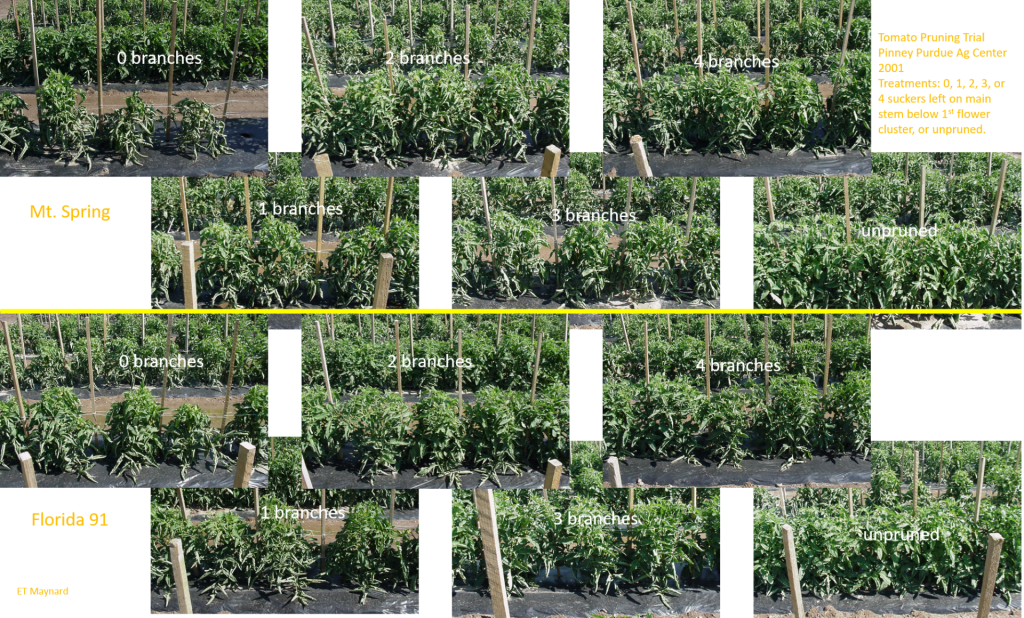We received calls recently reporting observations of leaf curling on tomatoes. This article discusses factors that may cause tomato leaf curling.
In a similar way as other vegetables, hot and dry conditions may cause leaf curling on tomatoes. In late spring and early summer, plants that are actively growing and developing fruit have a high demand for water. Under hot and dry conditions, plants respond by rolling the leaves to reduce the surface area exposed to high radiation. Lower leaves on a tomato plant are often affected first, they may recover if environmental stresses are reduced. Leaf curling itself due to the environmental stresses is not a significant concern, but if the stress condition continues, it may eventually lead to blossom end rot fruit and decreased yield. There is a great variation among tomato varieties in terms of whether the observation of leaf curling suggests the plant is suffering water stress that may eventually affect yield and quality. But as leaf curling is relatively easy to notice, it would be a good idea to check developing fruit for potential blossom end rot if severe leaf curling is detected.
Tomato leaf curling can be a response to heavy pruning (Figure 1). In this study, all branches below the first flower cluster were removed (0 branches); or 1, 2, 3, 4, branches below flower cluster were left. Unpruned plants were the control. Leaf curling was noticed on the most heavily pruned plants. It is believed that when a large amount of photosynthate is produced and there are not enough sinks to use it all (e.g. because branches have been removed), starch builds up in the leaves and causes them to curl. Note the difference between cultivar Mt. Spring (above) and Florida 91 (below), with Mt. Spring had heavier leaf curling.
Except for the margins of the leaves which are rolled up, the leaves generally appear normal for the above-mentioned leaf curling situations. However, if the curling leaves are severely deformed or twisted, herbicide damage may be a concern. In Figure 2., leaf curling is likely caused by hormone-type herbicide damage (such as 2,4-D and dicamba). The symptom was more pronounced on top of the plants, where new growth occurs. Tomato plants are extremely sensitive to herbicide damage. Depending on the level of the injury, some plants may not be able to recover. In less severe cases, about half a dozen leaves that were developing at the time of exposure show symptoms, along with flowers or fruit near those leaves, but later growth appears normal. There are no remedies for herbicide damage. More information about the herbicide damage can be found in the new Dicamba and 2,4-D Fact Sheet Series.
Insect or disease damage may also cause tomato leaf rolling. Other symptoms such as mosaic, chlorosis or the signs of the insect itself may accompany with the leaf curling symptom. If you suspect the leaf curling was caused by these biotic factors. Samples should be sent to the Plant and Pest Diagnostic Laboratory for pest identification before taking action.
